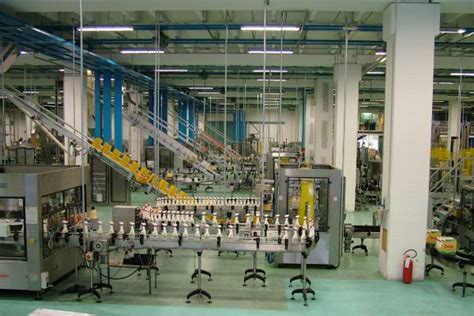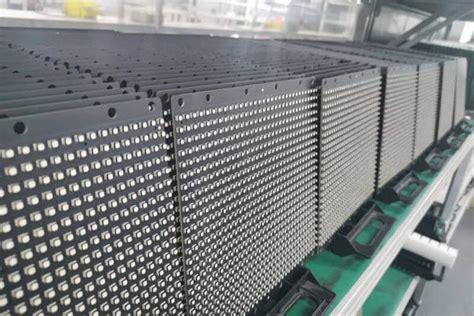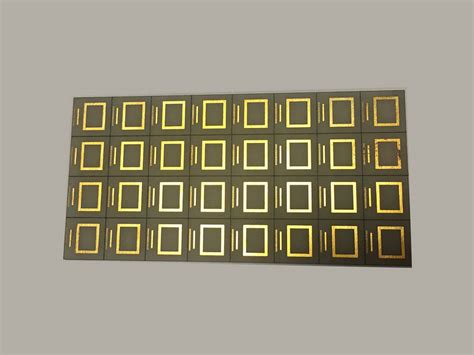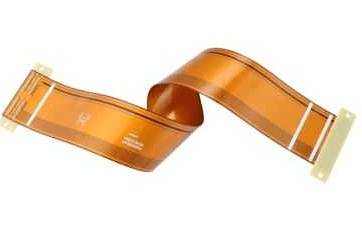Streamlining Success: Full Turnkey Assembly for Modern Production
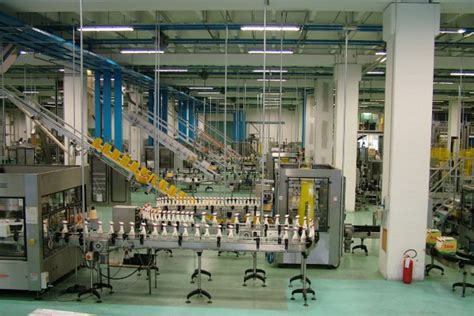
Key Takeaways
Full turnkey assembly offers a comprehensive approach to modern production, combining PCB assembly (PCBA), design integration, and quality assurance under a single provider. This model eliminates fragmented workflows by ensuring end-to-end oversight—from component sourcing to final testing—reducing delays and errors. A critical advantage lies in seamless integration, where design specifications are directly translated into manufacturing protocols, minimizing miscommunication and iterative adjustments. For industries reliant on PCB assembly, this approach ensures precision in high-density interconnect (HDI) designs or mixed-technology boards, which demand specialized expertise.
Operational efficiency is further enhanced through standardized processes and automation, enabling faster throughput without compromising quality. By outsourcing PCBA and other production stages to a unified partner, companies avoid the logistical complexities of managing multiple vendors, freeing internal resources for innovation. Accelerating timelines becomes achievable through parallel task execution, such as concurrent prototyping and compliance testing, which shortens time-to-market—a decisive factor in competitive sectors like consumer electronics or IoT.
Scalability is another cornerstone, as full turnkey solutions adapt to fluctuating demand through modular workflows and agile resource allocation. This flexibility is vital for industries facing rapid technological shifts or seasonal demand spikes. Challenges like supply chain disruptions or component shortages are mitigated via proactive vendor networks and real-time inventory tracking, ensuring continuity even in volatile markets. Innovations such as AI-driven defect detection and digital twin simulations are reshaping turnkey assembly, offering predictive analytics to refine production accuracy. Ultimately, adopting this model positions businesses to achieve sustainable growth while maintaining a laser focus on core competencies.
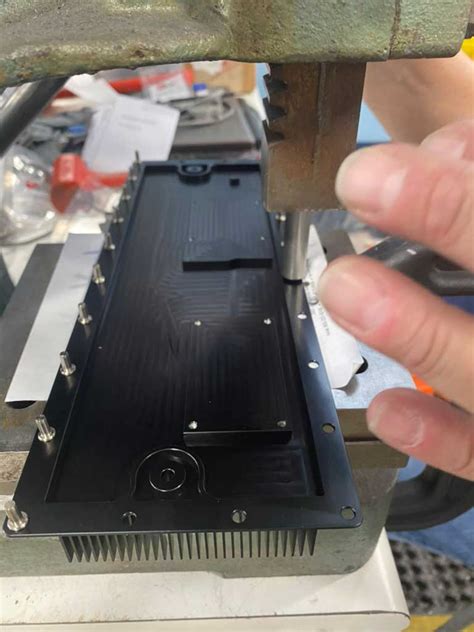
Introduction to Full Turnkey Assembly in Contemporary Production
In today’s fast-paced manufacturing landscape, full turnkey assembly has emerged as a cornerstone for businesses aiming to simplify complex production workflows. This approach consolidates every stage of product development—from design and prototyping to PCB assembly (PCBA), testing, and final delivery—into a single, integrated solution. By entrusting the entire process to a specialized partner, companies eliminate fragmented coordination between multiple vendors, reducing complexity and minimizing risks associated with miscommunication or delays.
Central to this model is the seamless integration of end-to-end manufacturing solutions, which ensures that design specifications align precisely with execution. For instance, in industries reliant on PCB assembly, a turnkey provider manages component sourcing, surface-mount technology (SMT), and rigorous quality checks, ensuring consistency across batches. This holistic approach not only accelerates timelines but also enhances operational efficiency, enabling businesses to meet tight deadlines without compromising precision.
The adoption of full turnkey assembly is particularly transformative for sectors like electronics, automotive, and IoT, where PCBA and advanced circuitry demand specialized expertise. By leveraging a partner’s infrastructure and technical proficiency, organizations avoid the capital-intensive burden of maintaining in-house facilities. Moreover, scalability becomes inherent to the process, as turnkey providers adapt to fluctuating demand, whether scaling up for mass production or pivoting to accommodate iterative design changes.
While challenges such as initial investment analysis and vendor selection persist, the long-term benefits—including faster market entry, reduced overhead, and access to cutting-edge technologies—position full turnkey assembly as a strategic enabler of modern production. As industries continue to prioritize agility and precision, this model stands as a blueprint for achieving sustainable, scalable success.
Core Advantages of End-to-End Manufacturing Solutions
End-to-end manufacturing solutions, particularly through full turnkey assembly, empower businesses to unify fragmented processes into a cohesive production strategy. By integrating PCB assembly (PCBA) and other critical stages under a single provider, companies eliminate redundancies, minimize logistical bottlenecks, and ensure consistent quality across all phases. This approach simplifies supply chain management, as suppliers, component sourcing, and testing protocols are consolidated into a seamless workflow. For industries reliant on precision—such as electronics or automotive manufacturing—the ability to delegate PCB assembly from prototype to mass production reduces risks of miscommunication and delays, ensuring faster time-to-market.
A key strength lies in the strategic alignment of design, procurement, and assembly. Advanced PCBA providers leverage automated systems and real-time data analytics to optimize material utilization and minimize waste, directly enhancing operational efficiency. Furthermore, scalability is built into the framework, allowing manufacturers to adjust production volumes without overhauling infrastructure. This flexibility is critical in dynamic markets where demand fluctuations require rapid adaptation. By embedding quality control at every stage—from component validation to final testing—full turnkey assembly mitigates defects and ensures compliance with stringent industry standards.
Innovations such as smart factory integration and IoT-enabled monitoring further amplify these advantages, enabling predictive maintenance and continuous process refinement. For businesses prioritizing agility and precision, end-to-end solutions represent not just a operational upgrade, but a strategic asset in achieving long-term competitiveness.
Seamless Integration: Connecting Design to Execution
In modern manufacturing, seamless integration bridges the gap between conceptual design and physical execution, ensuring that every stage of PCB assembly and PCBA aligns with precision. This approach eliminates fragmented workflows by embedding design intent directly into production processes. Advanced software tools enable real-time collaboration between engineers and manufacturers, translating design files into actionable assembly instructions without manual intervention. For instance, automated design-for-manufacturability (DFM) checks identify potential bottlenecks early, reducing rework and ensuring compatibility with full turnkey assembly workflows.
A critical advantage lies in the synchronization of component sourcing, PCB assembly, and testing phases. By consolidating these stages under a single provider, manufacturers minimize delays caused by miscommunication or supplier mismatches. For example, integrated platforms track component availability in real time, automatically adjusting procurement schedules to avoid shortages. This cohesion is particularly vital in PCBA, where even minor discrepancies in part specifications can derail timelines.
| Aspect | Traditional Approach | Turnkey Solution |
|---|---|---|
| Design Handoff | Manual file transfers | Automated DFM validation |
| Component Sourcing | Multiple vendors | Unified procurement system |
| Assembly Process | Sequential stages | Parallel, synchronized workflows |
| Quality Control | Post-production inspections | In-line automated testing |
Such integration also enhances transparency. Clients gain visibility into every step, from initial prototyping to final PCB assembly, through centralized dashboards. This end-to-end oversight ensures adherence to specifications while enabling rapid adjustments—critical for industries like aerospace or medical devices, where precision is non-negotiable. Furthermore, standardized communication protocols reduce errors, ensuring that design revisions propagate instantly across all production stages.
By harmonizing design and execution, full turnkey assembly transforms complexity into clarity, enabling manufacturers to deliver high-quality PCBA solutions with unmatched efficiency.
Enhancing Efficiency Through Streamlined Processes
Modern production thrives on eliminating redundancies, and full turnkey assembly delivers precisely that by integrating every stage of manufacturing under a unified framework. By combining PCB assembly (PCBA), component sourcing, testing, and logistics into a single managed workflow, businesses reduce bottlenecks that traditionally arise from fragmented processes. This holistic approach ensures that design specifications transition seamlessly into production, minimizing delays caused by miscommunication or supplier mismatches.
A key driver of efficiency lies in the automated workflows embedded within turnkey solutions. For instance, advanced PCBA systems leverage real-time monitoring and predictive analytics to identify potential defects early, reducing rework and material waste. Additionally, standardized protocols for quality assurance—such as automated optical inspection (AOI) and functional testing—streamline validation, ensuring products meet exacting standards without manual intervention.
Tip: To maximize efficiency, align your design phase with your manufacturer’s capabilities. Early collaboration reduces redesign cycles and accelerates time-to-market.
The elimination of handoffs between multiple vendors also plays a critical role. In traditional setups, transferring partially completed projects between specialists for PCB assembly, firmware integration, or enclosure fabrication introduces logistical delays. Full turnkey assembly erases these boundaries, enabling synchronized execution. For example, a single provider managing both PCBA and final assembly can adjust timelines dynamically, avoiding inventory pileups or component shortages.
Moreover, resource optimization is inherent to this model. By consolidating procurement, manufacturers negotiate better pricing for bulk components, passing savings to clients. Simultaneously, centralized data systems provide visibility into every process stage, empowering decision-makers to identify inefficiencies and reallocate resources proactively.
Finally, the scalability of turnkey solutions ensures that efficiency gains are sustainable. Whether scaling production for high-volume orders or adapting to design iterations, integrated systems adjust without overhauling workflows. This flexibility is particularly vital in industries like consumer electronics, where rapid innovation cycles demand agility.
By prioritizing seamless coordination and end-to-end accountability, full turnkey assembly transforms efficiency from an aspirational goal into a measurable outcome.

Accelerating Timelines for Competitive Market Entry
In today’s fast-paced industrial landscape, full turnkey assembly has emerged as a critical enabler for businesses aiming to expedite product launches and secure first-mover advantages. By consolidating every stage of production—from PCB assembly and PCBA (Printed Circuit Board Assembly) to final product integration—into a unified workflow, companies eliminate the inefficiencies of fragmented supply chains. This approach minimizes delays caused by multi-vendor coordination, allowing organizations to focus on innovation rather than logistics. For instance, single-source responsibility ensures that design validation, component sourcing, prototyping, and testing occur under one roof, reducing lead times by up to 40% in sectors like consumer electronics and automotive manufacturing.
The integration of PCB assembly into full turnkey solutions is particularly transformative. Advanced providers leverage automated systems for precision soldering, surface-mount technology (SMT), and thorough quality inspections, ensuring rapid yet reliable output. Meanwhile, PCBA processes are optimized to align with broader production goals, enabling seamless transitions from prototype validation to mass production. This agility is vital for industries where market windows are narrow, such as IoT devices or medical equipment. By outsourcing complexity to turnkey partners, businesses reallocate internal resources toward strategic initiatives like R&D and market analysis, further compressing time-to-market cycles.
Scalability is another cornerstone of this model. Turnkey providers employ modular workflows that adapt to fluctuating demand without compromising speed. Whether scaling up for seasonal peaks or pivoting to accommodate design tweaks, manufacturers benefit from on-demand flexibility that traditional methods struggle to match. Moreover, real-time data analytics embedded within modern full turnkey assembly systems preempt bottlenecks, ensuring timelines remain predictable even as complexity grows. For enterprises eyeing global markets, this reliability translates to a stronger competitive edge—transforming production from a cost center into a strategic accelerator.
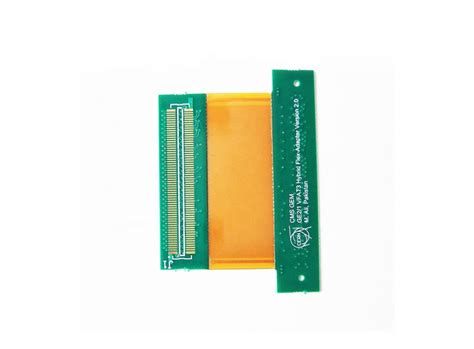
Scalability: Meeting Evolving Industry Needs
In today’s dynamic industrial landscape, scalability is a cornerstone of sustainable growth. Full turnkey assembly solutions address this imperative by offering adaptable frameworks that align with shifting market demands and production volumes. By integrating PCB assembly (PCBA) and other critical manufacturing stages into a unified workflow, businesses gain the agility to scale operations without compromising quality or efficiency. For instance, industries such as automotive, medical devices, or consumer electronics often face fluctuating order volumes. A turnkey approach enables seamless transitions between prototyping, mid-scale runs, and mass production, eliminating the need for fragmented supplier relationships or redundant investments in infrastructure.
Central to this scalability is the inherent flexibility of end-to-end solutions. Providers of full turnkey assembly manage everything from component sourcing and design validation to testing and logistics, ensuring that scaling up—or down—does not disrupt timelines. Advanced PCB assembly processes, combined with automated workflows, reduce bottlenecks typically associated with manual interventions, enabling manufacturers to respond swiftly to market opportunities. For example, a company expanding into IoT devices can leverage PCBA expertise to rapidly iterate designs while maintaining consistency across batches, even as order volumes surge.
Moreover, scalability is enhanced through modular systems that allow customization. Whether adjusting for regional compliance standards or incorporating new technologies, full turnkey partners streamline adaptations without requiring clients to overhaul existing processes. This is particularly vital in sectors like renewable energy or aerospace, where regulatory updates or technological advancements demand rapid recalibration. By embedding predictive analytics and real-time monitoring into production lines, turnkey providers further future-proof operations, anticipating scalability challenges before they arise.
Ultimately, the ability to scale efficiently hinges on eliminating silos between design, procurement, and execution. Full turnkey assembly not only bridges these gaps but also fortifies supply chain resilience, ensuring that scalability translates to sustained competitive advantage.
Addressing Challenges in Turnkey Assembly Adoption
While full turnkey assembly offers transformative benefits, its adoption presents unique challenges that organizations must strategically navigate. A primary hurdle lies in aligning PCB assembly workflows with broader production systems, particularly when integrating specialized components or advanced PCBA technologies. Disparities in design compatibility, material sourcing, or equipment calibration can disrupt seamless integration, necessitating meticulous coordination between design and manufacturing teams. Additionally, the upfront investment in full turnkey solutions—from advanced machinery to skilled labor—can strain budgets, especially for smaller enterprises. However, this cost is often offset by long-term gains in operational efficiency and reduced time-to-market.
Another critical challenge involves managing supply chain dependencies, as delays in procuring materials for PCB assembly or unexpected shortages can stall entire production cycles. Companies must adopt agile procurement strategies and foster partnerships with reliable suppliers to mitigate risks. Communication gaps between stakeholders—such as designers, engineers, and third-party vendors—also pose risks, particularly in complex PCBA projects requiring precision in component placement and testing protocols. Standardizing communication frameworks and leveraging collaborative tools can bridge these gaps, ensuring alignment from prototyping to final assembly.
Quality assurance remains a persistent concern, as inconsistencies in PCB assembly processes or lapses in testing protocols may lead to defects. Implementing rigorous quality control checkpoints and adopting automated inspection systems, such as AOI (Automated Optical Inspection), can enhance reliability. Finally, scalability demands careful planning; while full turnkey solutions excel in adapting to evolving production volumes, organizations must ensure their infrastructure and workflows are modular enough to accommodate future expansions without overcomplicating existing systems. By addressing these challenges through strategic planning, cross-functional collaboration, and technology adoption, businesses can unlock the full potential of end-to-end manufacturing solutions, turning obstacles into opportunities for growth.
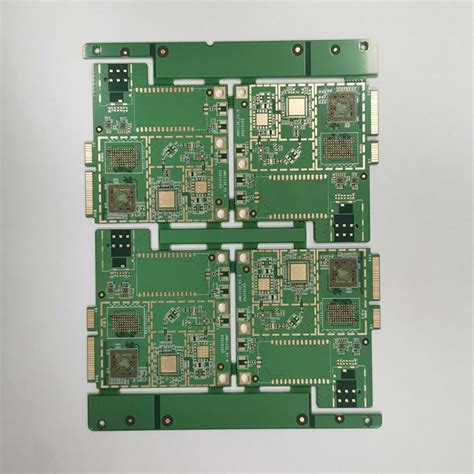
Innovations Shaping the Future of Turnkey Solutions
The evolution of full turnkey assembly is being driven by groundbreaking technologies that redefine how industries approach production. Central to this transformation is the integration of AI-driven analytics and IoT-enabled systems, which optimize PCB assembly and PCBA workflows by predicting material requirements, detecting defects in real time, and automating quality assurance. These advancements not only minimize human error but also enable manufacturers to deliver precision at scale. For instance, smart factories now leverage modular production lines that adapt dynamically to design changes, ensuring seamless transitions from prototyping to mass production.
Another critical innovation is the adoption of additive manufacturing within full turnkey solutions, allowing for rapid prototyping and complex component fabrication without traditional tooling constraints. This is particularly transformative for PCBA processes, where custom circuit boards can be developed and tested in days rather than weeks. Additionally, advancements in robotic process automation (RPA) are streamlining material handling and assembly tasks, reducing lead times while maintaining consistency across high-volume orders.
Sustainability is also reshaping the landscape, with manufacturers prioritizing energy-efficient practices and recyclable materials in PCB assembly to meet global environmental standards. Meanwhile, cloud-based collaboration platforms are breaking down silos between design, procurement, and production teams, fostering agility in responding to market demands. By harmonizing these innovations, full turnkey assembly providers are not only accelerating timelines but also future-proofing operations for emerging challenges—ensuring scalability, resilience, and competitive advantage in an era of rapid industrial evolution.
Conclusion
The adoption of full turnkey assembly represents a transformative approach for industries striving to balance speed, quality, and scalability in today’s competitive markets. By consolidating every phase of production—from design and PCB assembly to testing and logistics—into a single, cohesive workflow, businesses eliminate fragmented processes that often lead to delays or cost overruns. This end-to-end methodology ensures seamless integration between conceptualization and execution, enabling manufacturers to focus on innovation rather than operational bottlenecks. For sectors like electronics, where precision in PCBA (Printed Circuit Board Assembly) is critical, turnkey solutions minimize risks by embedding quality control at every stage while accelerating time-to-market.
Moreover, the inherent scalability of full turnkey assembly allows companies to adapt swiftly to fluctuating demand or evolving technological standards without overhauling their infrastructure. By leveraging advanced automation and data-driven insights, modern turnkey providers optimize resource allocation, reduce waste, and maintain consistency—even as production volumes grow. Challenges such as supplier coordination or technical compatibility are mitigated through strategic partnerships and standardized protocols, ensuring that businesses retain agility without compromising on deliverables.
As industries continue to prioritize efficiency and rapid innovation, full turnkey assembly stands out as a cornerstone for sustainable growth. Its ability to unify complex workflows—particularly in domains like PCB assembly—positions it not just as a operational strategy, but as a catalyst for redefining what’s possible in modern manufacturing.
Frequently Asked Questions
What is full turnkey assembly, and how does it differ from traditional manufacturing?
Full turnkey assembly refers to an end-to-end production model where a single provider manages every stage—from design and PCB assembly (PCBA) to testing and delivery. Unlike traditional methods, which often involve multiple vendors, this approach ensures seamless integration, reduces coordination overhead, and accelerates timelines.
How does full turnkey assembly improve efficiency in electronics manufacturing?
By consolidating processes like component sourcing, PCB assembly, and quality control under one roof, operational bottlenecks are minimized. Providers leverage advanced automation and expertise in PCBA to streamline workflows, reducing errors and ensuring faster time-to-market.
What industries benefit most from full turnkey solutions?
Industries requiring complex PCB assembly, such as automotive, aerospace, and consumer electronics, gain significant advantages. The model’s scalability and precision make it ideal for high-volume production or specialized projects needing rigorous compliance standards.
Can full turnkey solutions accommodate custom design requirements?
Yes. Providers often collaborate closely with clients to refine designs, optimize PCBA layouts, and integrate bespoke features. This flexibility ensures that even highly specialized projects align with performance and cost objectives.
How does full turnkey assembly reduce risks in production?
With end-to-end oversight, risks like component shortages, miscommunication, or quality inconsistencies are mitigated. Providers use predictive analytics and real-time monitoring to address issues proactively, ensuring consistent output.
What role does technology play in modern turnkey assembly?
Advanced tools like AI-driven design validation, automated PCB assembly lines, and IoT-enabled testing systems enhance precision. These innovations enable providers to deliver high-yield production while maintaining strict quality benchmarks.
Is full turnkey assembly cost-effective for small-scale projects?
While often associated with large volumes, many providers offer scalable pricing models. By optimizing material procurement and minimizing waste, even smaller batches can achieve cost efficiency through PCBA-focused turnkey services.
Ready to Optimize Your Production Line?
Explore how full turnkey assembly can transform your manufacturing workflow. For tailored solutions in PCB assembly and end-to-end integration, please click here to connect with our experts today.

